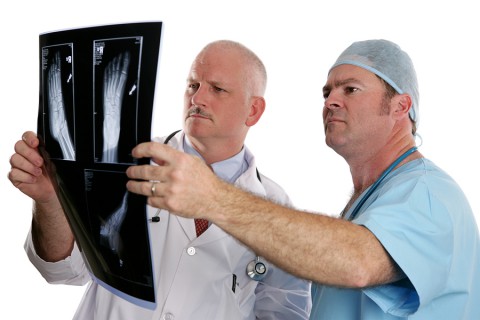 Why is it that there have been a multitude of television shows about surgeons, ER doctors and even pathologists, but not one single show about radiologists when they play a large role in the healthcare field?
Why is it that there have been a multitude of television shows about surgeons, ER doctors and even pathologists, but not one single show about radiologists when they play a large role in the healthcare field?
If you asked Dr. David Steinberg, founder of Steinberg Diagnostics in Las Vegas for his opinion on the importance of radiologists, he’ll happily share it. “We radiologists are the doctors’ doctor,” he said. “We are a diagnostic tool and a large part of medicine.”
Because this specialty is one that is often performed behind the scenes, many patients may be unclear as to the significance it plays in their health and well-being. Radiologists can perform an essential duty in the overall treatment of patients, and it is a task that other doctors can turn to when they are in need of answers that could help save their patients’ lives.
The Sherlock Holmes of Medicine
When most people think of radiologists they might think of a doctor who just reads X-rays, but there is so much more to the specialty than what is on the surface. Dr. Randal Shelin, President of Desert Radiologists, points out a lengthy list of responsibilities. “We also read CT scans, MRIs, fluoroscopies, neurographies and sonograms. … There are many subspecialties from diagnostic imaging to interventional radiology. We do quite a bit of detecting.”
Here’s the real scenario of the job: A doctor treats a patient who is complaining of pain and a set of specific symptoms. Upon a physical exam, the doctor may refer that patient to a radiologist to take a set of specific images. The initial doctor may or may not be able to see anything of interest on those images, but the radiologist, who has been trained to spot abnormalities, may be able to determine the exact cause of the patient’s pain and symptoms.
“We take the mystery out of pain and label it. It’s terribly relieving.” Steinberg said. “When you label something, they [the patients] lose the fear of the unknown.”
The Technology Continues to Evolve
As technology in general continues to evolve, so does the technology that captures diagnostic images. Today, when someone complains of pain in their abdomen and a doctor deduces appendicitis, a CT scan is immediately ordered. Just 20 years ago, that same diagnosis, without a CT scan, was only correct approximately 30% of the time. With modern technology, doctors can be more confident they make the right diagnosis every time.
Much of the computer technology currently being used in hospitals across the world didn’t exist 20 years ago. Today’s radiologists have access to color radiology and 3-D imaging commonly used in mammography. Specialized imaging machines, which can cost anywhere between $500,000 and $600,000, are constantly being added to healthcare facilities to help improve patient diagnosis and treatment plans.
Radiologists Can Impact Lives
Perhaps the biggest myth about radiologists is that they don’t personally impact patients, but that term “impact” may be up for further interpretation. When a patient is scared, in pain and complaining of horrendous symptoms, they need answers. Radiologists, perhaps more than any other doctor, can impact patients’ lives because they are the ones that can ultimately identify the problem, and determine a proper treatment plan.
Dr. Shelin is ultimately proud of the work he and other radiologists do.
“If I do my job well, because of us, their doctor can make a correct and complete diagnosis,” he said.









